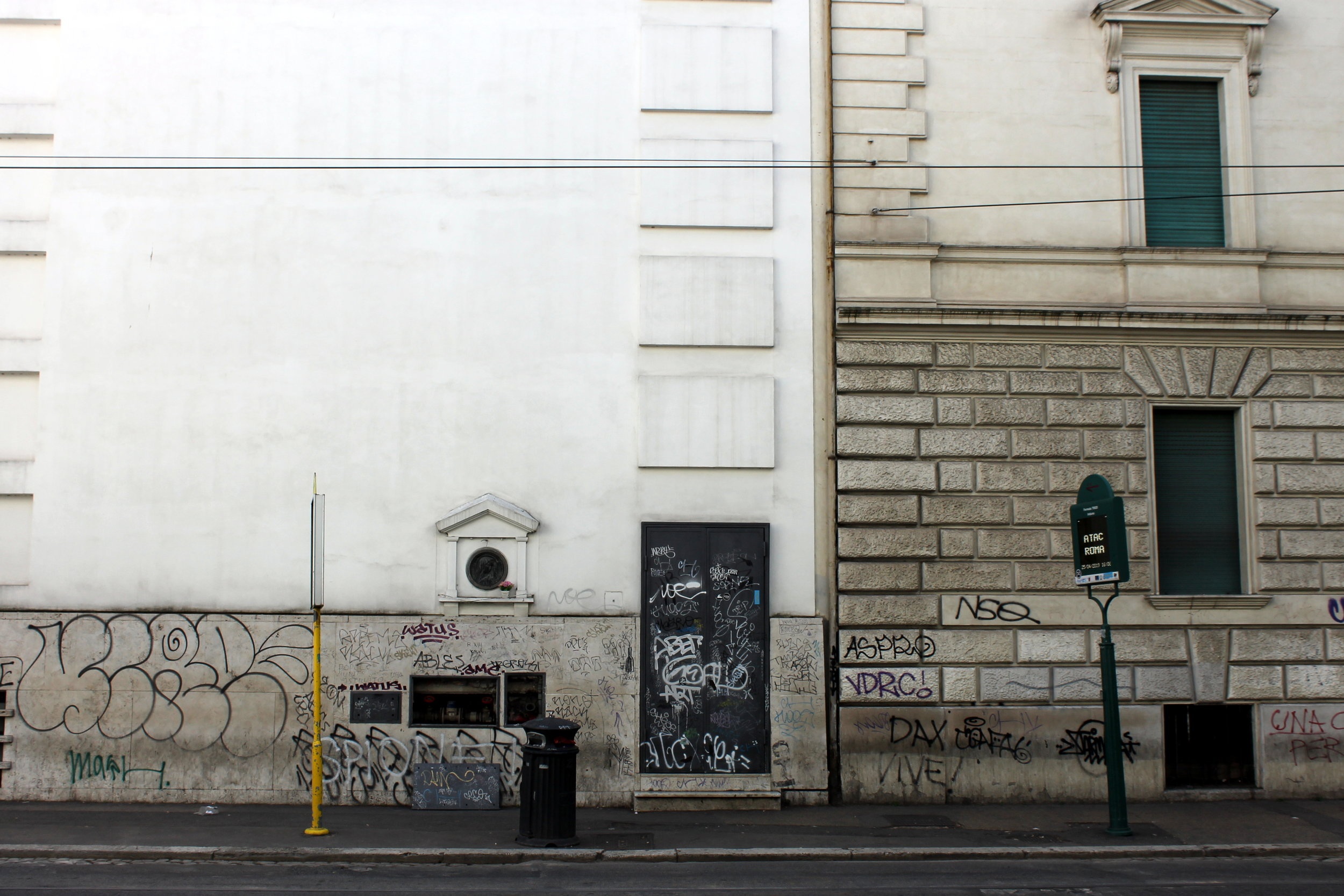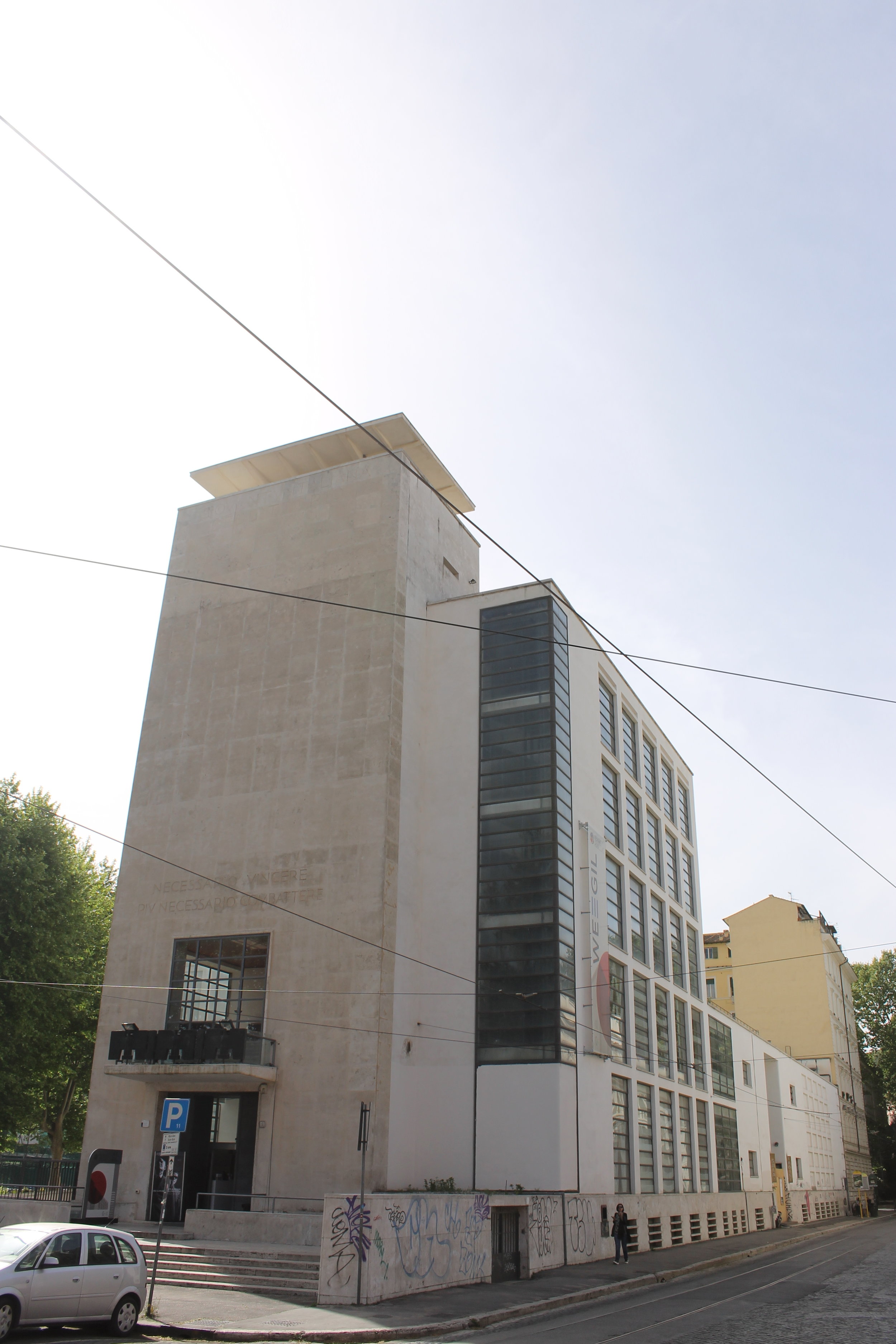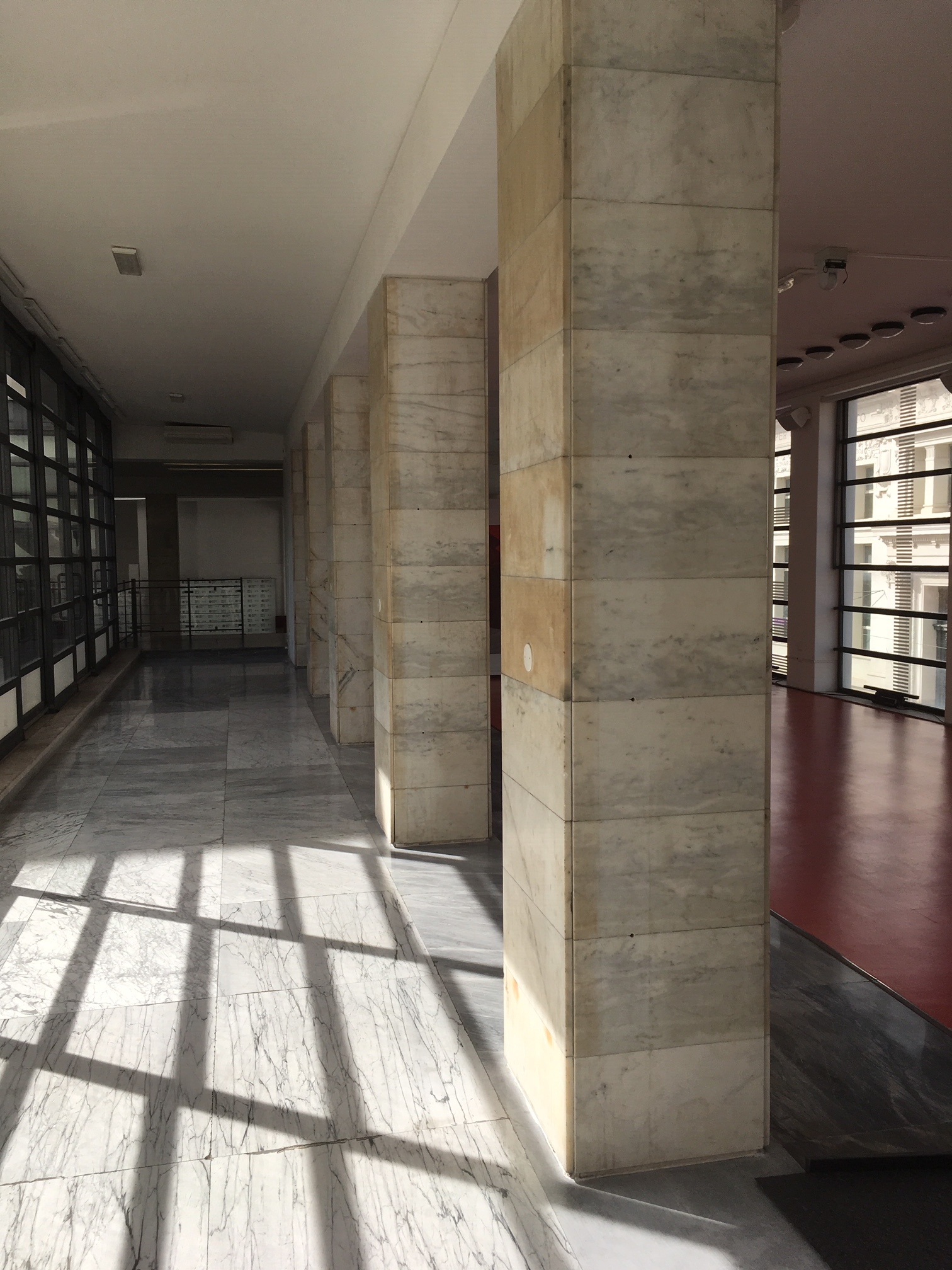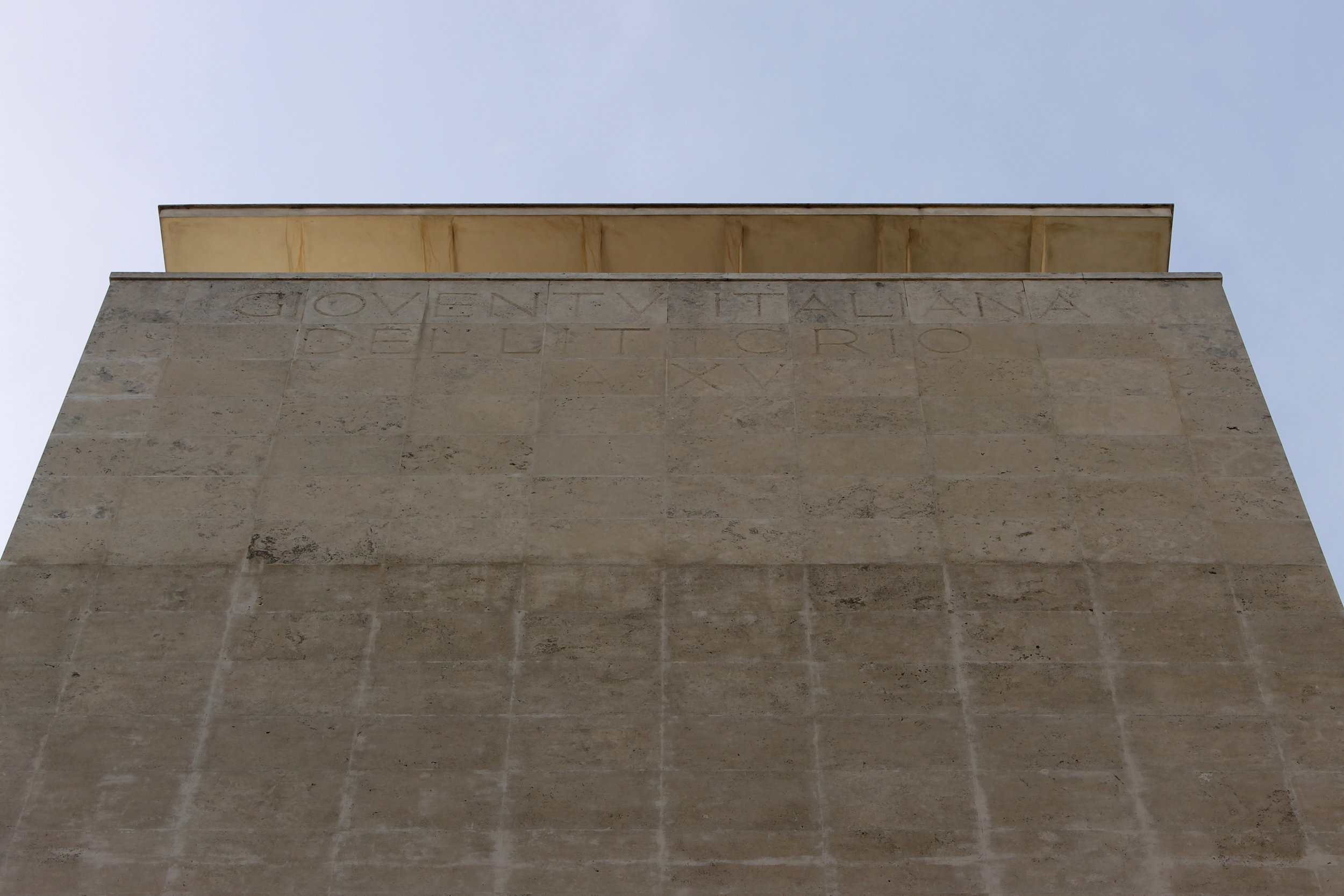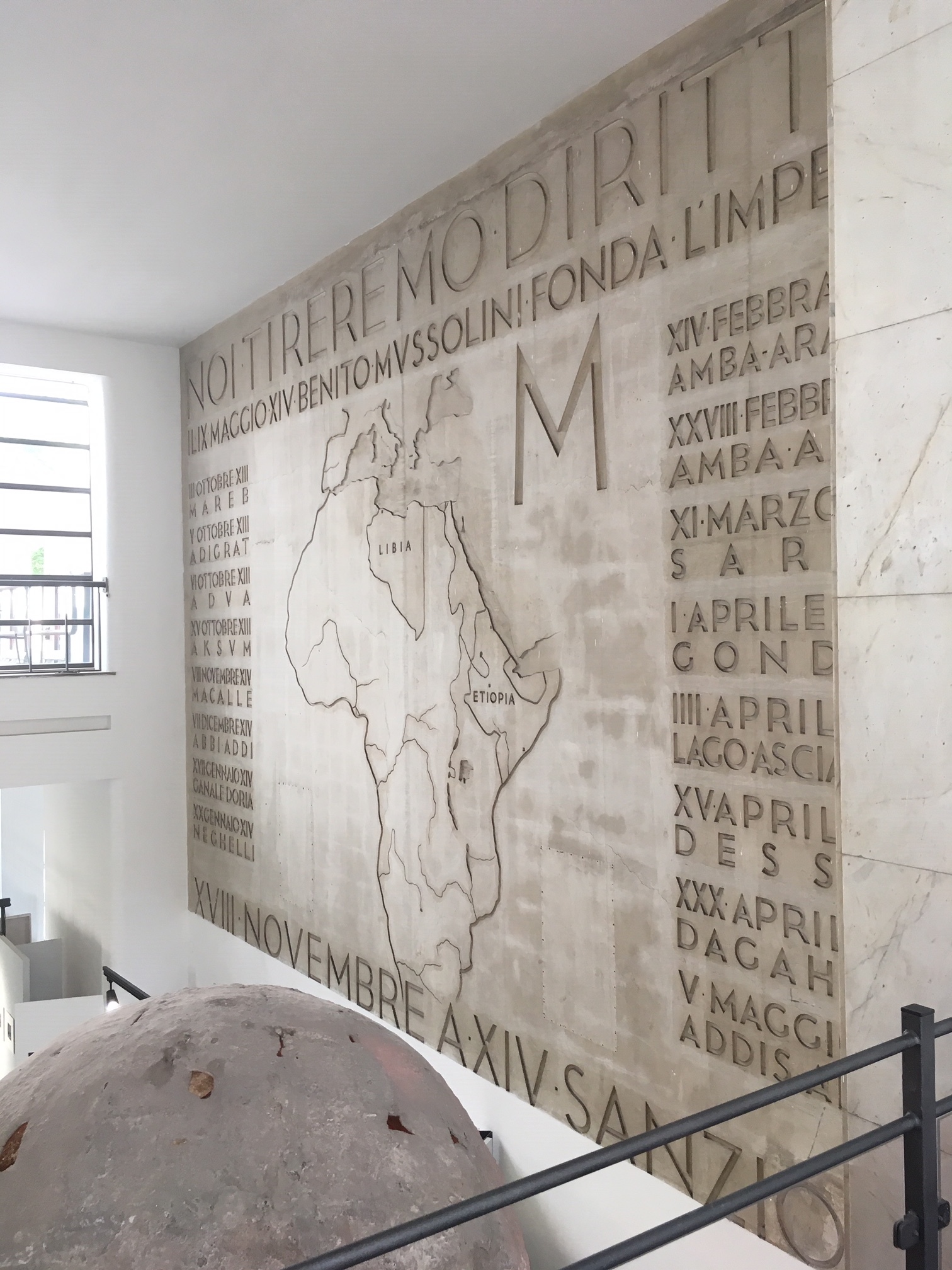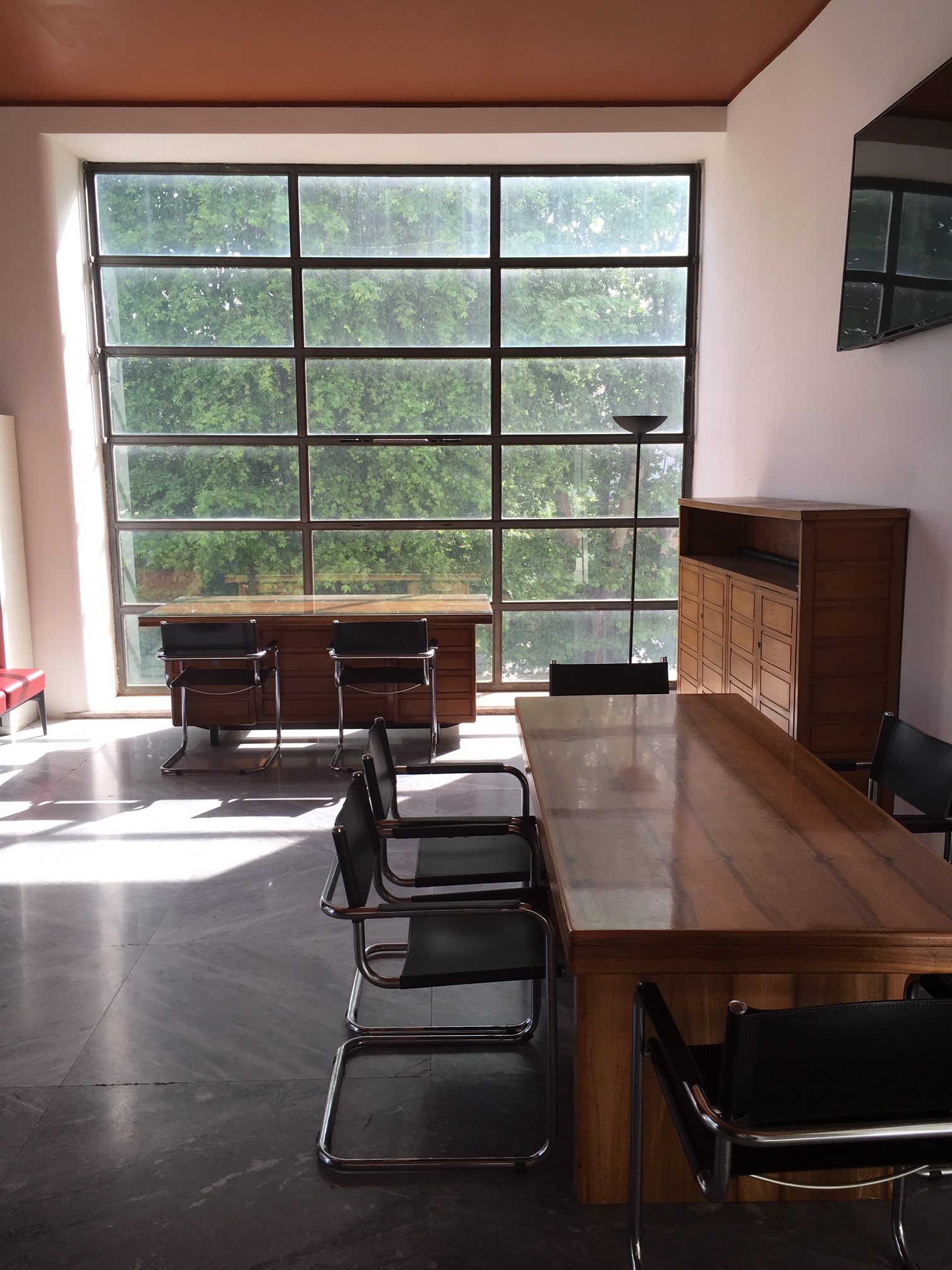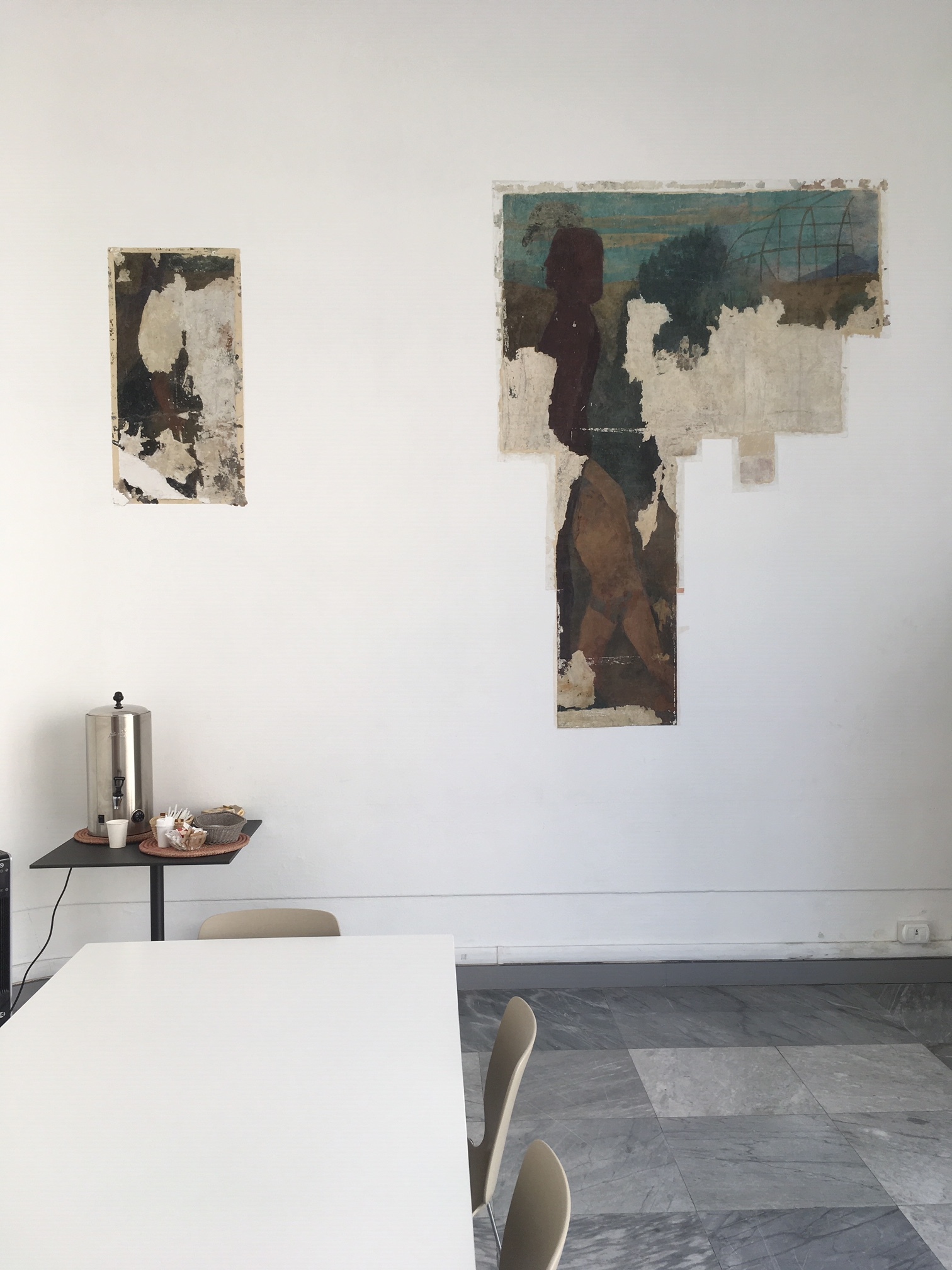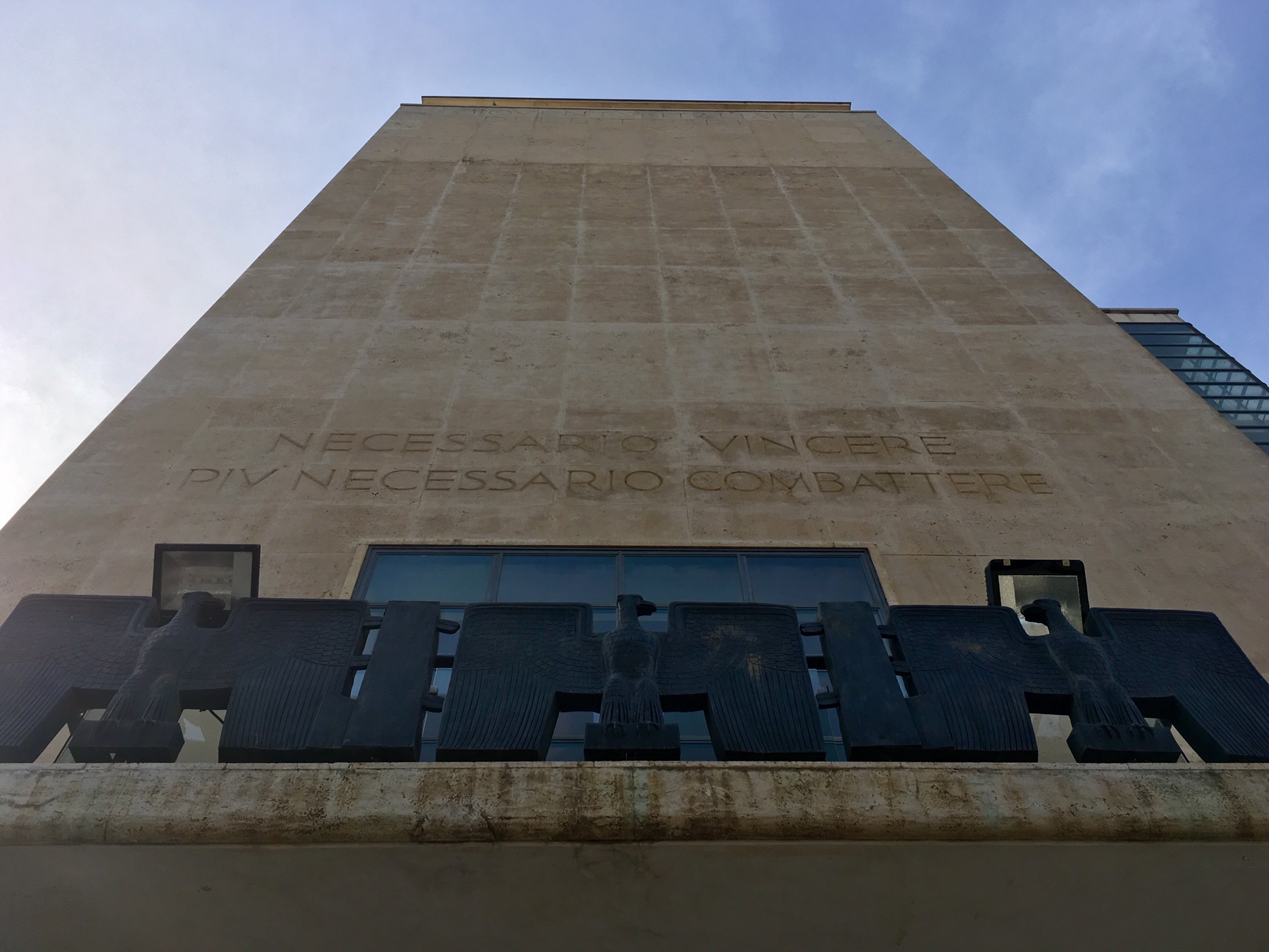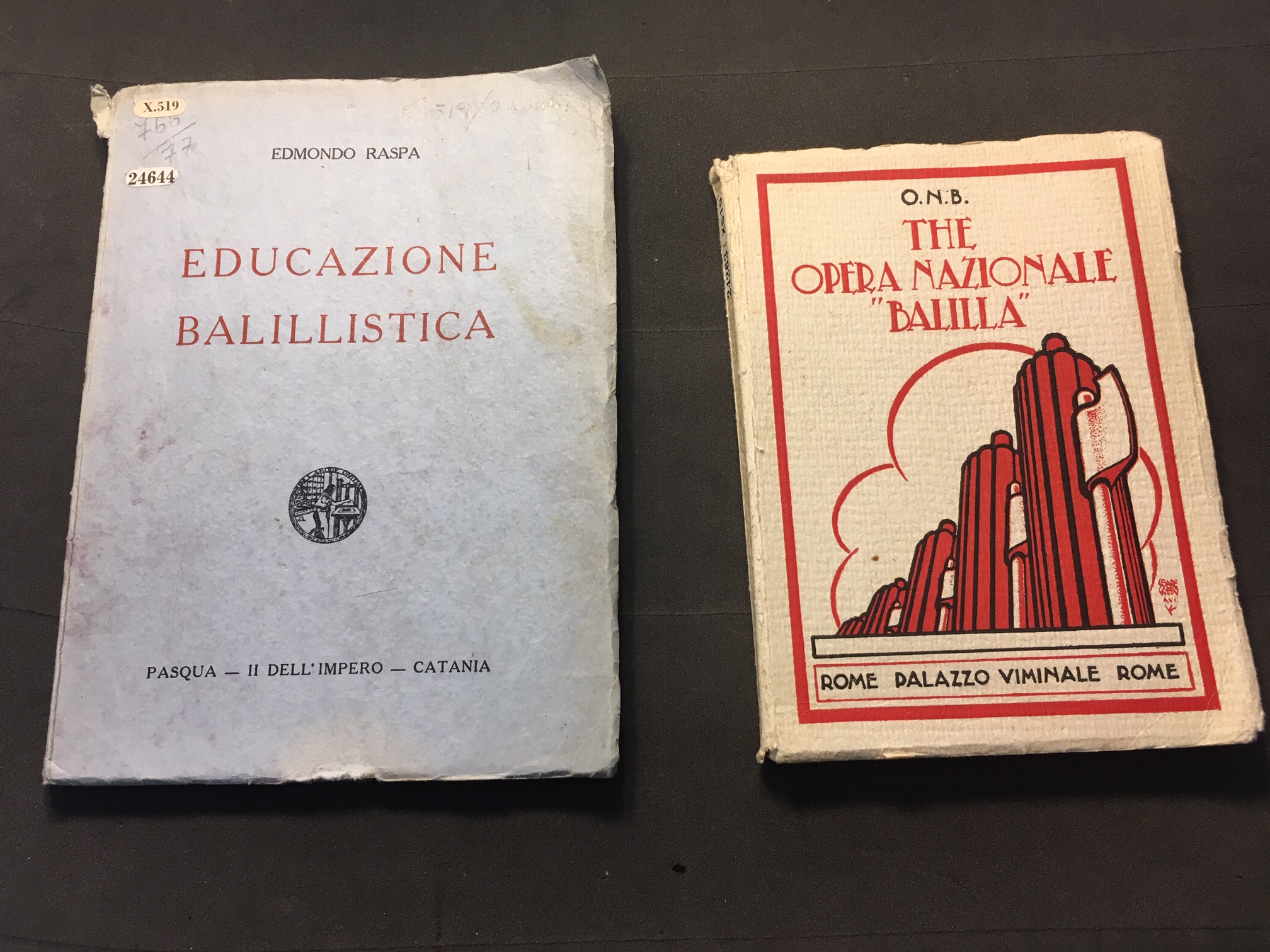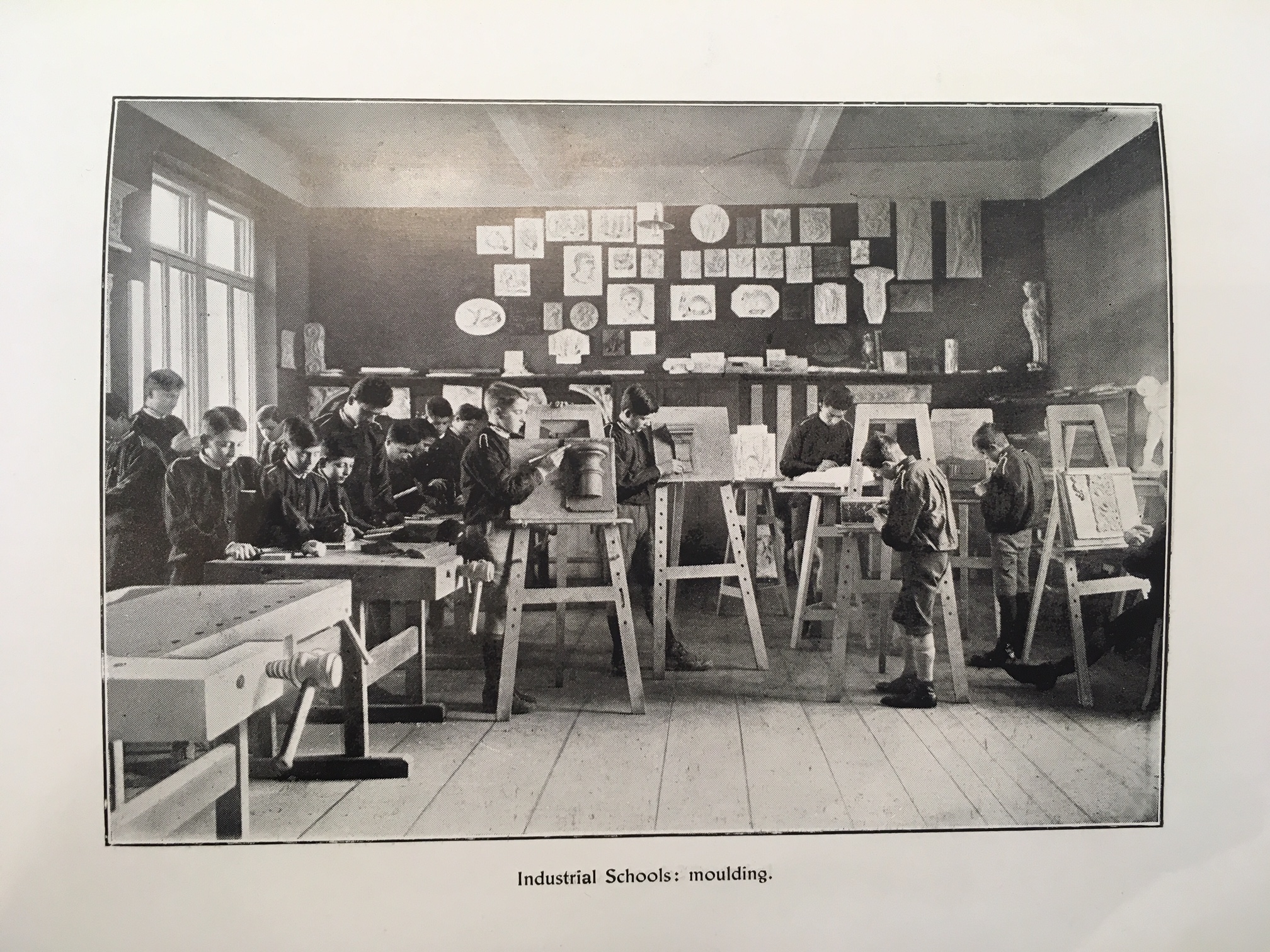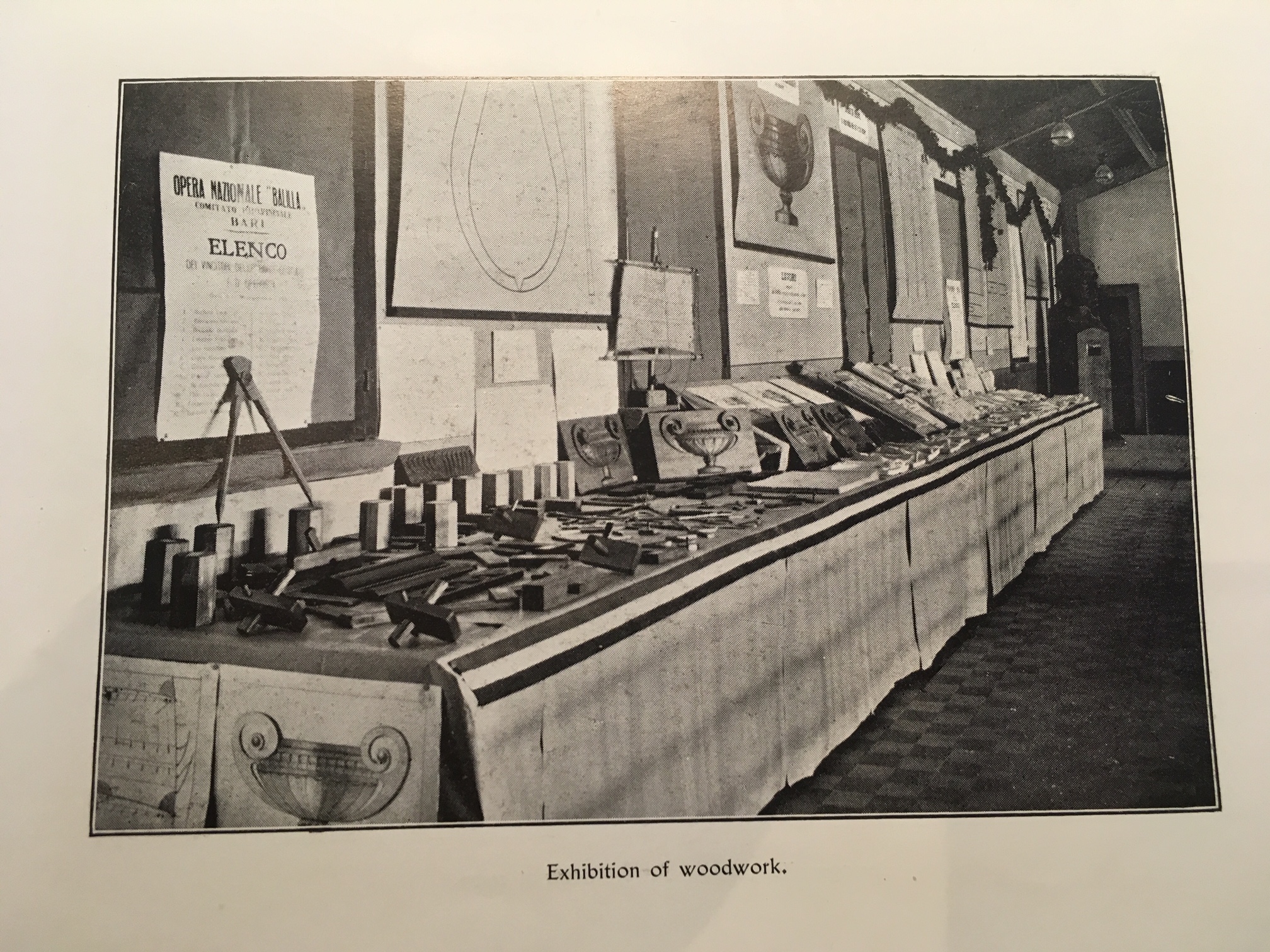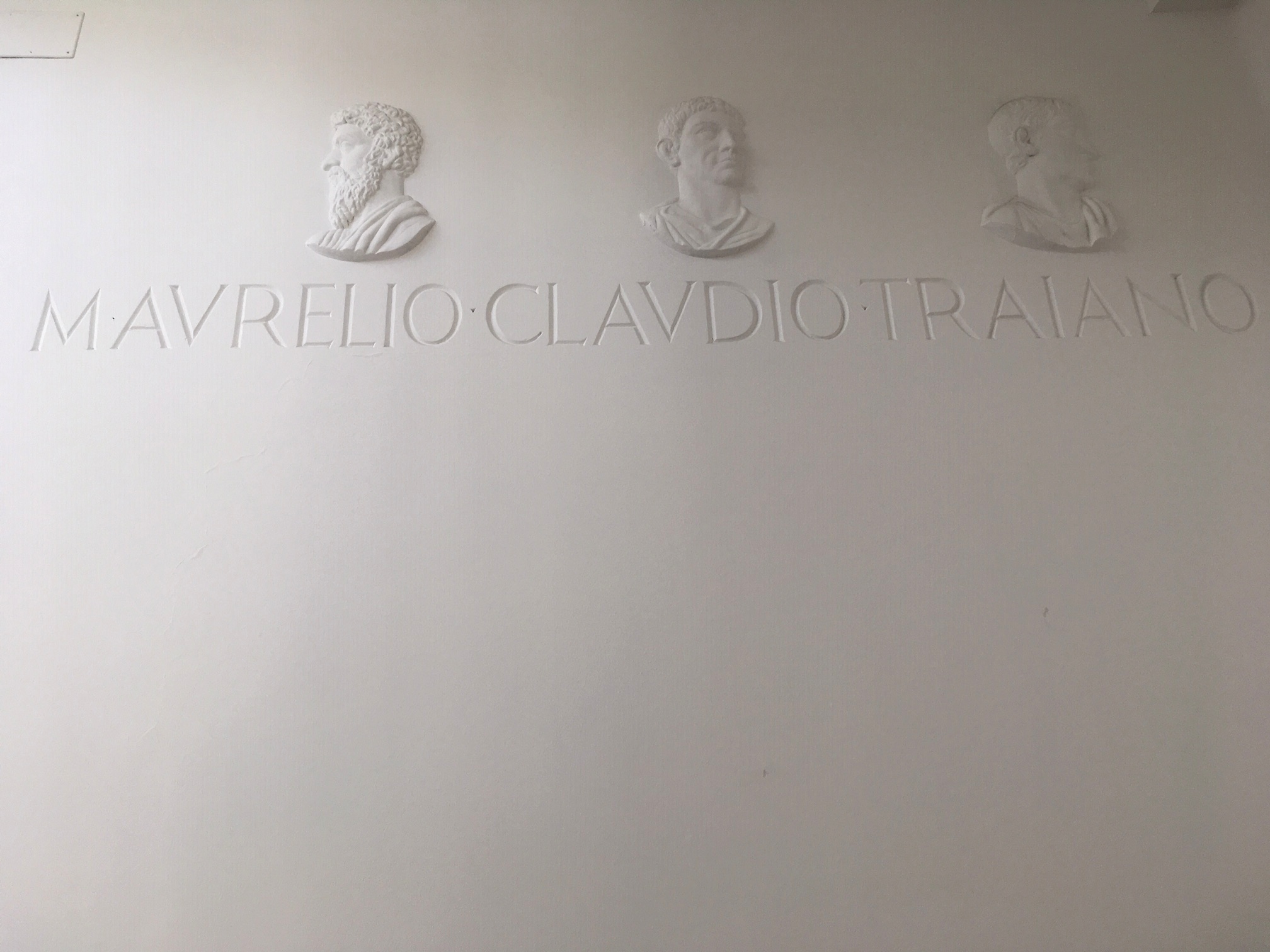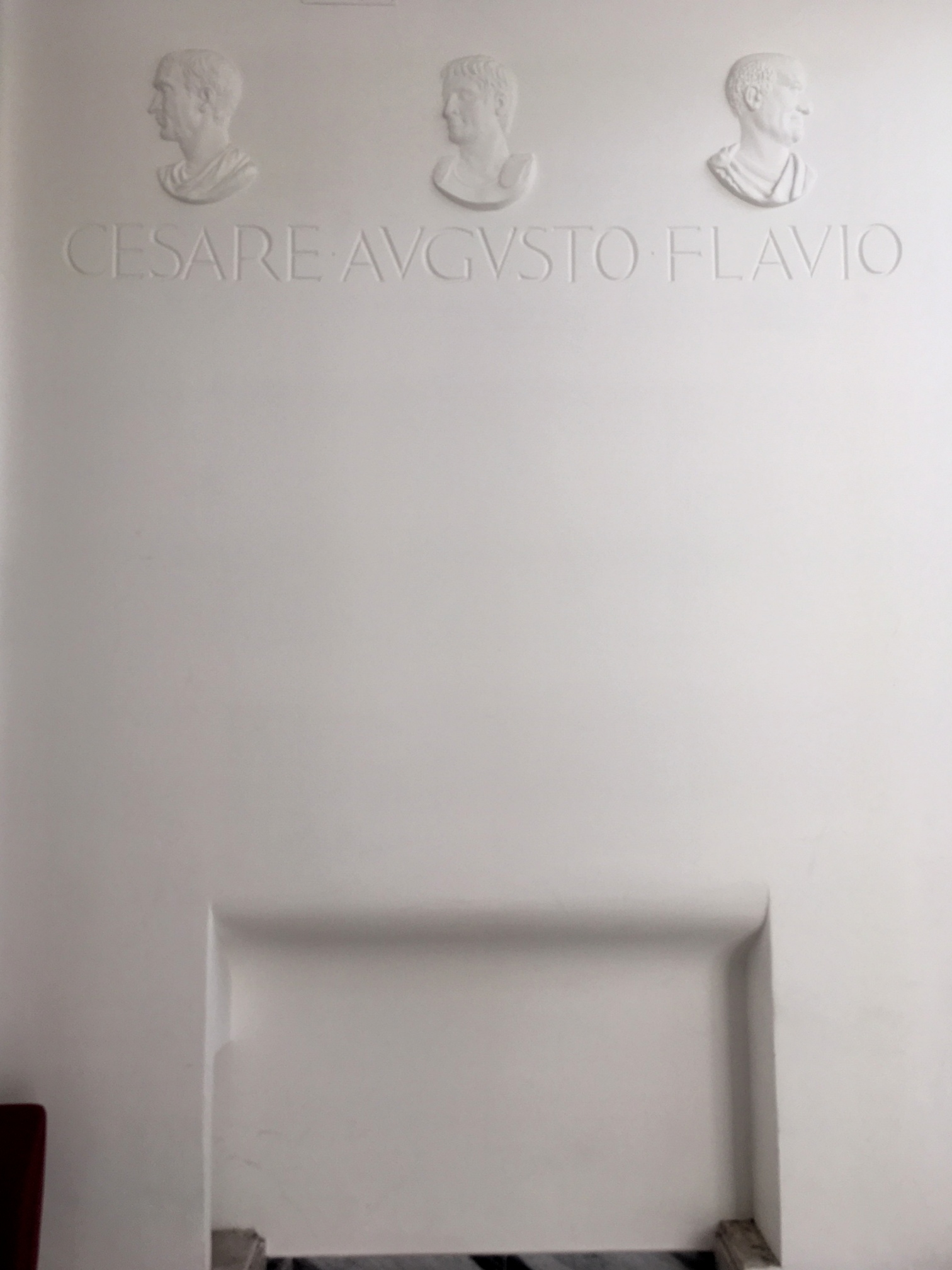Roman Youth and the Fascist Youth of Mussolini's Italy
When I was living in Rome this past academic year (finishing my dissertation—which meant I haven’t posted on here as much as I would have liked!), I’d often walk past a striking fascist era building on the Via di Porta Portese. Along the flank of the graffitied building I’d often find myself waiting for one of those Roman ATAC buses that may or may not ever come (or catch on fire!). I’d noticed the building years ago, but only this year did I venture inside (they had a photo exhibition documenting the murder of Pasolini to boot!). Now called WEGIL, a multi-purpose community arts center, the building was once known as the Casa della Gioventù Italiana del Litorio (GIL). Inaugurated in 1937 and designed by the architect Luigi Moretti, the building is a modernist aesthetic feast for the architectural nerds out there (including myself), who are attracted to the strong geometrical lines, the rich use of materials (marbles inside, as well as the tell tale travertine), and what is just a prime example of Italian rationalist, fascist architecture.
But, wait, “you’re a fan of fascist architecture?!”, you say? Yes, the modernist aesthetics do appeal to me. Clean lines, geometric shapes, spiral staircases—I can’t help but like that. Fascist architecture in many ways adopted broader currents in modernist architecture emerging in the early 20th century. Yet I am entirely aware of the mixed feelings a building like this evokes in myself and many others—“why do I like this type of architecture, of all that’s out there?”. It’s a debate that is going on in Italy, too: Should these buildings be preserved at all? Torn down? The responses have been varying. This uneasy feeling of being torn about a building and its purpose hits home even more so in terms of the WEGIL building in Trastevere, which is directly relevant to my own research, since it housed the fascist youth organization, originally known as the Opera Nazionale Balilla (from 1926), which then became home to the next (and final) incarnation of that group, the Gioventù Italiana del Littorio in 1937. Membership in the group was a prerequisite for any future in the Fascist party and all other youth groups were outlawed (e.g. the Catholic one).
I was also drawn to this building, and others like it, because my own research on Roman youth has forced me to come to grips with the legacy of Italian fascism even more so because of the imprint it has left on some of the scholarship written on ancient Roman youth.
More on that in a moment.
***
A few months ago, walking and talking with an Italian friend, I was intrigued to learn that his grandmother had also experienced a far more direct version of this guilt provoked by an aesthetic appreciation of fascism’s clever orchestration of not only architecture, but mass political pageantry. As a girl she had participated as one of the 20,000 from the GIL (the youth organization) in the elaborate spectacle put on for Mussolini’s state visit to Verona in December 1938. One part of this visit culminated in a spectacle at the Roman arena, now used to stage operas and the like over the summer. The youth were arranged and dressed in black and white so as to spell the word DUX in the arena’s seating (Mussolini was known by this, or the Italian “Il Duce”). At the time, my friend’s grandmother remembered being swept up in the moment of communal fervour and that visual feat, not knowing what she was actually participating in. Years later, having become a staunch socialist, she would tell my friend, her grandson, of her mixed feelings about that happy memory—how it was (not too much later) soured by the knowledge that it had all been in the service of a sinister man and ideology. This is the experiential legacy of the fascist youth organization—something that my aesthetic dilemma can never approach.
The official state visit of Mussolini to Verona in December 1938. The Roman arena. Photo: Wikicommons.
Unlike my friend’s grandmother, however, I have to acknowledge how I am unburdened by those experiences of the 20th century in many ways—though by no means entirely free of them. (I don’t think anyone is). I can much more readily separate my aesthetic appreciation of fascist architecture from the ideological work it did at that time with the benefit of hindsight, as well as a measure of generational and geographical distance. So while living in Rome, I came to notice, and slowly compile, some of the ways that the Italian fascist ideology drew upon the exempla of ancient Rome in relation to the propagation of its ideology among “the youth”, but also how this fed back into our historical understanding of ancient Rome and its own youth (iuventus).
***
In 1924, Matteo Della Corte, one of the foundational scholars who worked on Pompeii and recorded much of its epigraphic material for posterity, published a brief, yet influential monograph, Iuventus. The book brought together a lot of different evidence—painted electoral advertisements (programmata), statues, graffiti, formal inscriptions, buildings and spaces purportedly used by the youth and more—all with a view to arguing that Pompeii had the earliest example of a collegium or sodalicium iuventutis—a professional association for youths. Firmly attested evidence for such groups really doesn’t come onto the scene until the late 1st century CE (at best), and really only takes off at the beginning of the 2nd century CE. This is not the place for me to go through the problems with his argument and evidence in depth (I’ll save that for an article I’m working on), but suffice to say that Della Corte was very liberal in his reading of much of the evidence, especially the painted electoral programmata and some inscriptions. He regularly drew upon the programmata in particular to make his case, like the one below, in which a group known as the Veneriosi (worshippers of Venus) support a Ceius Secundus iuvenis (“young man”) in his candidacy for the local office of duovir iure dicundo.
Bottom left corner, CIL IV.7791: Ceium Secundum IIv(irum) i(ure) d(icundo) / Veneriosi rog(ant) iuvenem. Photo: Clauss / Slaby.
Where electoral advertisements like the one above would acclaim certain candidates standing for the aedileship as a iuvenis or adulescens (often with a positive attribute tacked on in adjectival form—another thing for another time!), Della Corte saw any reference in them to a candidate as a “youth” as a reference to his membership in a so-called youth association. The singular stood for an envisaged whole. In one case, Della Corte interpreted an honorific inscription for Marcellus (CIL X.832), the nephew of Augustus, which clearly names him as the patron (patronus) of Pompeii, and argued that it might actually refer to Marcellus as the patronus of the youth (patronus iuventutis) because the inscription does not specify who or what he was the patron of (most rightly assume the colony of Pompeii: patronus coloniae) and because it was found near both a gymnasium and a statue of the Doryphorus (pictured on the book cover, above)—the oft-cited physical ideal of male youth (though we should remember that Pliny the Elder assigns the statue the ambiguous quality of being viriliter puer: a manly boy). There is more to the argument, but it rapidly becomes circular—buttressing his book’s overall claim about the existence of such a youth association almost a century before we have any hard evidence for one.
But, why does Della Corte matter? You might reasonably ask—haven’t we moved on from work done in 1924? Yes, in some ways, we have. More recent editors of our go-to corpus of epigraphic material for Pompeii (CIL IV) have curtly and correctly dismissed his claims, even if his interpretation of some spaces, such as the Triangular Forum, as youth-related spaces, still holds sway among some scholars of Pompeii today. Even more than this, Della Corte’s book has a bearing on our understanding of Pompeii and its historiography as a key site in the fascist state’s ideological education (or interpellation to borrow Althusser’s framework) of the Italian “youth” under Mussolini. Although his book was published two years before the first fascist youth group would be created in 1926, Iuventus soon became influential among his fellow scholars, such as Amedeo Maiuri, and Della Corte himself was a fascist fanatic who was keen to report his colleagues to the fascist authorities.
Ray Laurence has shown how Della Corte’s work on the iuventus and especially the discovery of the Grand Palaestra fuelled the fascist obsession with the revival of the Roman past and its heritage in the present—romanità—and the drawing of parallels between the youth of the day and the ancient Roman youth, even down to their exercise spaces. Pamphlets about the Opera Balilla, the early youth organization, showcase this building of equivalences between ancient Rome and fascist Italy. In a 1937 pamphlet, Edmondo Raspa looked to both ancient Greece and Rome for educational antecedents to the Balilla, focusing on the militaristic aspects of training for the youth (even claiming that Sulla invented one such festival involving horseback riding, perhaps alluding to the lusus Troiae). Even more interesting is another pamphlet, written in English and clearly intended for audiences beyond Italy, which explains (or rather, celebrates) the various activities that the Opera Balilla undertake at their “colonies”, from sailing to sunbathing. Photos (below) show the youths at work in woodworking and moulding—noticeably, however, the models they are copying are pieces of classical architecture.
The (anonymous) author of the English pamphlet also explains how the structure of the Balilla is “framed according to the classic ternary formation of the armies of ancient Rome…”, that is, squadrons, maniples, centuries, cohorts and legions. A distinct contrast is even drawn with ancient Sparta: “education which in Sparta was merely crude, severe and cold, becomes on the contrary strong, orderly and graceful in Italy.” That Rome is the example par excellence is further driven home when the author describes a trip that 1000 Italian youths took to Libya in 1925 to inspect the territory and “learned how on the African coast Fascist Italy closely follows the track of the Roman eagles”. It is no coincidence that the WEGIL building in Trastevere (see photos above) sports a giant map of the fascist empire in Africa, but here we see some of the beginnings of that.
Looking back to that building in Trastevere, it is also revealing how some remnants of romanità, designed specifically for the youth, remain to tell a specific story about what parts of ancient Rome were appropriate for the youth. Six busts in relief adorn the walls inside the main hall—clearly chosen with the intent to represent the most positively evaluated emperors (or rather, more correctly, imperatores): Julius Caesar, Augustus, Vespasian (as Flavio), Marcus Aurelius, Claudius (odd order!), and Trajan. These were the models for the fascist youth.
Musket ceremony for new conscripts. From the English pamphlet.
Much of my own research looks at coming of age rites in ancient Rome, especially for young men, and so I was also intrigued to find that the author of the English pamphlet even made an equivalence between the young man’s exchange of the toga praetexta for the toga virilis with the young fascist’s receipt of their first musket: “The youthful conscripts of the Fascist Revolution receive the musket in the same spirit with which the youths of ancient Rome for the first time donned the toga of virility.”
One day I also paid a visit to the infamous Foro Italico, which is filled with an array of visual instantiations of romanità, not least its monochromatic mosaics which recall those found at Ostia and many other archaeological sites (such as the Villa Adriana where I’ve excavated in the past). One mosaic, on the way to the stadium, announces to Mussolini, “Duce, we dedicate our youth to you!”, featuring a youth with a horse, and nearby two athletic youths seemingly engaged in shot-put and the pole vault.
Foro Italico mosaic.
But what really caught my eye were the statues of athletic young men, cast as different types of athletes, which surround the stadium and represent the different towns in Italy. Viterbo’s statue of a boxer (from 1931) stood out in particular for the sculpted sideburns that the sculptor decided to include on the portrait—sideburns that very closely resemble those found on the portraiture of young male members of the Julio-Claudian family, likely to commemorate the performance of their first ritual shave (depositio barbae) and so signal their maturation and virility. The hairstyle and square, severe, facial features especially resemble the portraits of Germanicus and his sons. Now the sculptor, Silvio Canevari, may not have consciously chosen to imitate these features of Roman portraiture, but he may well have inadvertently done so.
Statue of a boxer, representing Viterbo. Silvio Canevari (1931). Foro Italico.
In 1937, the Mostra Augustea della Romanità, which celebrated the bimillenary of Augustus’ birth, symbolized the pinnacle of the fascist appropriation of ancient Rome. The exhibition and its catalogue has been well studied, but in terms of Roman youth, here too we find that equivalences were made that go back to Della Corte’s Iuventus. In a short book designed to accompany the exhibition, Le Associazioni Giovanili, Salvatore Puglisi unabashedly went through the history of Roman youth groups (even up to the emperor Constantine as princeps iuventutis!) and drew connections between ancient and fascist youth groups. In his preface, the connection is made explicit, but in a less than expected way:
In the study of antiquity and of Roman institutions, [the youth orgnaization] was generally considered, until now, a curiosity, a particular and isolated custom, without an apparent or direct relationship to the spirit of the civilization of Rome. But today, now that Fascism has placed the political and military education of the young generations at the heart of the power and continuity of the state, the ancient Roman institution of the Iuventus is illuminated in a new light, [and] it fits in with the much greater evidence in the life and history of the Roman Empire.
In Puglisi’s telling, then, only the contemporary triumph of fascist ideology and its interest in youth organizations made the ancient equivalent intelligible, rather than vice versa. By 1937, it seems, the fascist ideology had developed in such a way that the Roman past was not simply appropriated as an exemplum for that ideology, but rather, one of its claims now asserted that this exemplarity could have only been discovered, realised and articulated precisely because of that fascist ideology. Fascism had made the study of ancient Roman youth “relevant” again—lifted out of the academic shadows—just as that study serviced the needs of its new ideological champion.
Puglisi’s main source for his bold thesis? Among older works: Della Corte’s Iuventus. So while we are reliant on much of Della Corte’s work as an epigrapher for our understanding of Pompeii and its houses (his Case ed abitanti di Pompei is still important), we would do well to remember—in our scholarship and, perhaps even more so in our teaching—how Pompeii and its iuvenes were pushed into the service of fascist ideology and to justify the performances that many a youth was required to participate in—like my friend’s grandmother’s experience at the Roman arena of Verona in 1938.
